What’s Up?
On Wednesday morning, we met with blog regular James Saxon. James, who lives in Beaumont, TX, has kindly provided bird photography road trip guidance for Anita and me for the past several weeks. We photographed from our two separate vehicles while socially distancing but had plenty of time to chat. James inspired us to keep photographing despite the occasional rain and put us on some pretty good birds including today’s featured species and a tame young Reddish Egret.
I received this via e-mail from James on Thursday morning:
Thank you and Anita for giving me the opportunity to photograph with you on Wednesday. It was nice to meet Anita and you and share the morning. I do not do a lot of blurs; please find my best from today below. The caracara image was a result of being ready and dumb luck. While you were photographing Cormorants, I drove the road slowly and flushed the caracara and had just enough time to get four images of which the one below was the best — not great but a good story. I processed this as a high key B&W and ran Denoise and Gigapixel (the latter because of the large crop.) The last image of the Whistling Ducks is my favorite image of the day. The one face that is “sharp enough” fit nicely with the rest of the blurred birds in the landing flock. I added a radial filter with a small amount of opacity and centered on the face of the bird in relatively sharp focus. When you told me about adding the blur filter this morning, I tried it with this image and was happy with the result. Thanks for the tip.
Although I have never been on an IPT, I follow you daily and try to support your blog using the links and buying items from your online store. I can’t tell you how much I learn reading the blog and your books and e-Gudes. Today was no exception.
Thanks again for everything you do for nature photographers and I hope Anita and you get plenty of hawks. Stay in touch and plan a return visit in the Spring. Safe travels.
Jim
Topaz on Sale!
Right now Topaz is offering price reductions on the Utility Bundle and the Creator Bundle. The former normally sells for $359.96. It is on sale for an amazingly low $199.95. Click here, scroll all the way down to the sale, and enter the ARTHUR15 code at checkout to save an additional 15%! The Creator Bundle usually sells for #279.97 and is now on sale for $249.99. Using the ARTHUR15 code at checkout brings the price down to $212.49!
Please Remember
With income from IPTs approaching zero, please, if you enjoy and learn from the blog, remember to use one of my two affiliate programs when purchasing new gear. Doing so just might make it possible for me to avoid having to try to get a job as a Walmart greeter and will not cost you a single penny more. And if you use Bedfords and remember to enter the BIRDSASART code at checkout, you will save 3% on every order and enjoy free second-day air shipping. In these crazy times — I am out at least forty to sixty thousand dollars so far due to COVID 19 (with lots more to come) — remembering to use my B&H link or to shop at Bedfords will help me out a ton and be greatly appreciated. Overseas folks who cannot order from the US because of import fees, duties, and taxes can always help out by clicking here if they see fit.
The BAA Used Gear Page
The Used Gear page continues to be red hot! It is BAA Used Gear Page is the place to sell your used photographic equipment. We will help you to get your gear sold quickly for 20 to 60% or more than what the big guys are offering … Doubt me? Check out the Recent Sales list for the past ten months at the bottom of the page.
BIRDS AS ART is registered in the U.S. Patent and Trademark Office
Great Topaz News!
Folks who use the BAA Topaz link to purchase Sharpen AI, DeNoise AI, or the Utility Bundle (or any other Topaz plugins) will receive a 15% discount by entering the ARTHUR15 code at checkout. To get the discount you must use my link and you must enter the discount code. Be sure to start with this link.
Topaz Stuff
As I said just a while back and have said often many times before, I should have listened sooner. If you, like me, are new to the Topaz party, please use this link to purchase. Right now I can wholeheartedly recommend both Topaz Sharpen AI and Topaz DeNoise AI. Though I have not yet worked with JPEGtoRAW AI or Gigapixel AI, I have installed both of these plug-ins and look forward to trying them on some I-Phone 11 images fairly soon. If you are thinking like me, consider the Utility Bundle that includes all four plug-ins mentioned above at a money-saving price.
Again, those who purchase Sharpen AI or DeNoise AI using my link, can e-mail to request a short Getting Started with Topaz e-Guide. I had a bit of trouble getting the two plug-ins installed and having them appear in the Photoshop Filter Menu. In addition, I will explain how to best learn about the two plug-ins by applying them on a Layer (in Photoshop). I amazed myself yesterday by completing this guide in the car on the way to and from Sebastian. Huge thanks to Anita for doing the driving. Please include a copy of your Topaz order when requesting the guide.
New and Better Bedfords Discount Policy!
You can now save 3% on all of your Bedfords photo gear purchases by entering the BIRDSASART coupon code at checkout. Your discount will be applied to your pre-tax total. In addition, by using the code you will get 2nd day air shipping via Fed Ex.
Grab a Nikon AF-S Teleconverter TC-14E III and save $14.99. Purchase a Canon EOS R5 and your discount will be $116.97. Purchase a Sony FE 600mm f/4 GM OSS lens and save a remarkable $389.94! Your Bedford’s purchase no longer needs to be greater than $1,000.00 for you to receive a discount. The more you spend, the more you save.
|
|
|
119 sold to rave reviews. The SONY e-Guide by Patrick Sparkman and Arthur Morris |
The Sony Camera User’s e-Guide (and Videos)
Click here to purchase the guide with one Camera Set-up Video. Be sure to e-mail us by clicking here to specify your camera body so that we can send you a link for the correct video.
Click here to purchase the guide with two Camera Set-up Videos. Be sure to e-mail us by clicking here to specify your two camera bodies so that we can send you links for the correct videos.
Click here to learn more about the SONY e-Guide.
Money Saving Reminder
Many have learned that if you need a hot photo item that is out of stock at B&H and would enjoy free overnight shipping, your best bet is to click here, place an order with Bedfords, and enter the coupon code BIRDSASART at checkout. If an item is out of stock, contact Steve Elkins via e-mail or on his cell phone at (479) 381-2592 (Eastern time). Be sure to mention the BIRDSASART coupon code and use it for your online order. Steve has been great at getting folks the hot items that are out of stock at B&H and everywhere else. The wait lists at the big stores can be a year or longer for the hard to get items. Steve will surely get you your gear long before that. For the past year, he has been helping BAA Blog folks get their hands on items like the SONY a9 ii, the SONY 200-600 G OSS lens, the Canon EOS R5, the Canon RF 100-500mm lens, and the Nikon 500mm PF. Steve is personable, helpful, and eager to please.


Gear Questions and Advice
Too many folks attending BAA IPTs and dozens of photographers whom I see in the field and on BPN, are–out of ignorance–using the wrong gear especially when it comes to tripods and more especially, tripod heads… Please know that I am always glad to answer your gear questions via e-mail. Those questions might deal with systems, camera bodies, accessories, and/or lens choices and decisions.
|
|
|
I-Phone 11 Image Image #1: Anita North photographing from the rear passenger seat with the SONY 600 GM on the tripod |
Anita in the Backseat with Big Glass
I know from the get-go that it would be ideal if one of us could photograph off the tripod from the back seat while the other did the same from the driver’s seat. Before we left, I tried setting up an Induro GIT 304L in the backseat and though it was a bit more difficult thank doing so in the front seat, it worked. For our first attempt, at Anahuac NWR, Anita, being considerably smaller than me, volunteered for the back seat. She appreciated my driving and maneuvering skills on the narrow refuge roads. In addition, there is a developed skill in getting close to the birds and in good position for decent backgrounds without scaring them off.
The FlexShooter Heads in a Vehicle
Being able to level the head once parked is a huge advantage for each of the four FlexShooter heads. Since it pretty much impossible to level the tripod platform in a vehicle, heads like the Wimberley and the Mongoose are pretty much useless. As regular readers might recall, I have been able to make some really good flight shots from my vehicle with a FlexShooter head mounted on either the Induro GIT 204 or 304L tripods. To learn how to set your tripod up in the car, see the video here.
|
|
|
This image was created on 28 October 2020 at Anahuac NWR, TX. I used the Induro GIT 304/Levered-clamp FlexShooter-mounted Sony FE 600mm f/4 GM OSS lens, the Sony FE 1.4xteleconverter, and the 61-MP Sony Alpha a7R IV Mirrorless Digital Camera Body. ISO 3200. Exposure determined by Zebras with ISO on the rear dial: 1/320 sec. at f/5.6 in Manual mode. AWB at 10:18am on a cloudy drizzly morning. Tracking Flexible Spot AF-C was active at the moment of exposure and performed to perfection. Click the image to see a larger version and see if you can spot the red jighead … Image #2: Neotropic Cormorant/adult |
Adult Neotropic Cormorant
A nearly all-black waterbird with a snaky neck, Neotropic Cormorant occurs in sheltered waters of southern U.S. states, the Caribbean, and Latin America. It is very similar to the far more common and widespread Double-crested Cormorant; the two species often flock together. Double-crested is well larger and stockier than neotropic. The white feathers that outline the gular region at the base of the bill on the adults of the latter species are diagnostic. Working slowly and carefully from the vehicle allowed us to closely approach this relatively tame species that is fairly common at Anahuac NWR.
|
|
|
Click on the screen capture to view the larger version. Image #2A: Topaz DeNoise AI on the adult Neotropic Cormorant image at 100%. |
Topaz DeNoise AI on the adult Neotropic Cormorant image at 100%
Here, as part of my now regular workflow, I ran Topaz DeNoise AI at Auto on the whole image to clean it up and sharpen it just a bit. As there was not much noise at all, the DeNoise sharpening was more dramatic than the noise reduction.
|
|
|
Click on the image to view a larger version. Image #2B: Topaz Sharpen AI on the distal half of the cormorant’s bill at 50%. |
Topaz Sharpen AI on the Distal Half of the Bill
Here, as above, I first ran DeNoise AI on the whole image. Next I selected the distal half of the cormorant’s bil, opened that a in Topaz Sharpen AI, and hit Auto. Then I moved the Sharpness sider up to 69. Notice that the basal part of the bill visible in this screen capture is sharper, but that the bill tip was simply beyond the limited depth of field.
|
|
|
This image was created on 28 October 2020 at Anahuac NWR, TX. I used the Induro GIT 304/Levered-clamp FlexShooter-mounted Sony FE 600mm f/4 GM OSS lens, the Sony FE 1.4xteleconverter, and the 61-MP Sony Alpha a7R IV Mirrorless Digital Camera Body. ISO 3200. Exposure determined by Zebras with ISO on the rear dial: 1/320 sec. at f/5.6 in Manual mode. AWB at 10:18am on a cloudy drizzly morning. Tracking Flexible Spot AF-C was active at the moment of exposure and performed to perfection. Click the image to see a larger version and see if you can spot the red jighead … Image #3: Neotropic Cormorant/immature |
Immature Neotropic Cormorant
The young birds of this species are of course similar to the adults in size and structure and are always much smaller than their double-crested cousins. The whitish feathers behind the base of the bill are similar to those on young double-crested; rely instead on the smaller size and the slimmer structure of the young neotropics when separating the two species.
|
|
|
Click on the screen capture to view the larger version. Image #3A: Topaz DeNoise AI on the back of the immature Neotropic Cormorant image at 400%. |
Topaz DeNoise AI on the Back of the Immature Neotropic Cormorant image at 400%.
Here I ran Topaz DeNoise AI at Auto on the whole image to clean up the noise in the BLACKs. For the first time ever, I moved the Color Noise Reduction slider from zero to 50. That really helped to eliminate the green and purple splotches from the darkest tones. The more I play with the Topaz AI plug-in settings, the more I learn.
Typos
In all blog posts and Bulletins, feel free to e-mail or to leave a comment regarding any typos or errors. Just be right :).

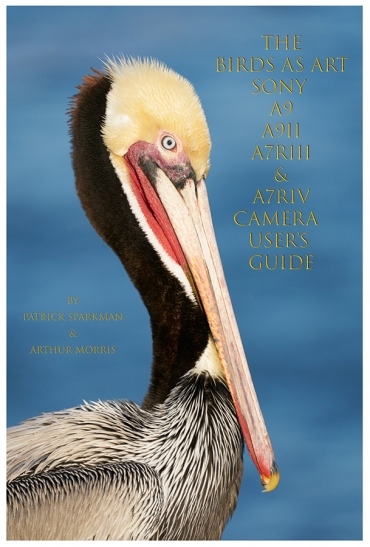

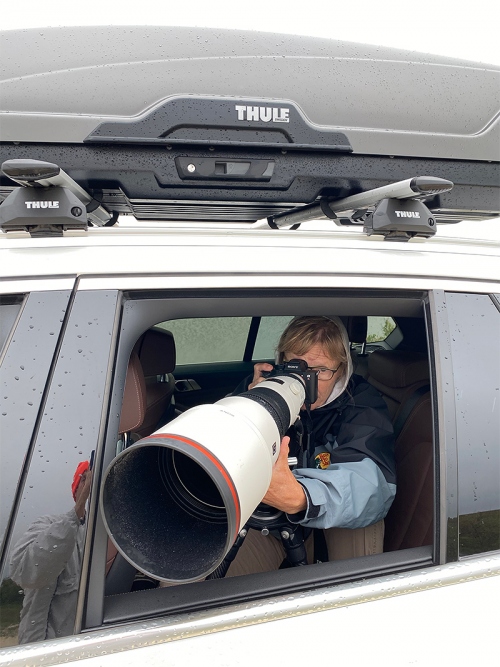
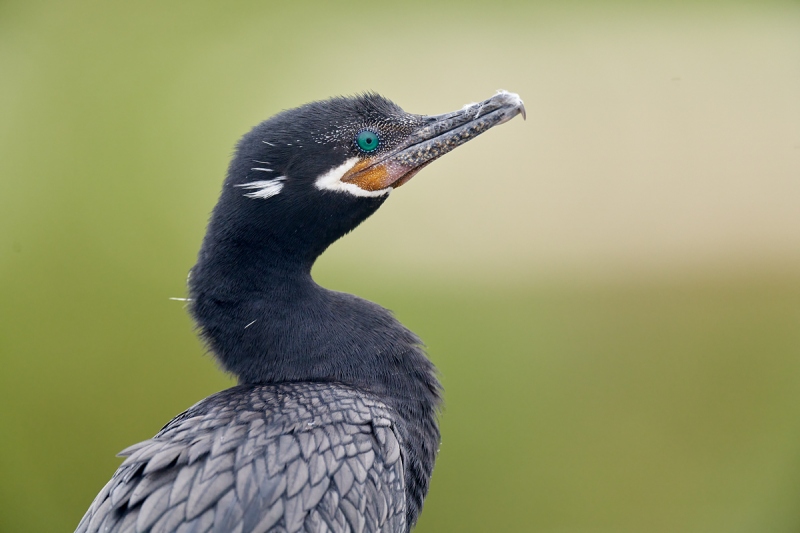
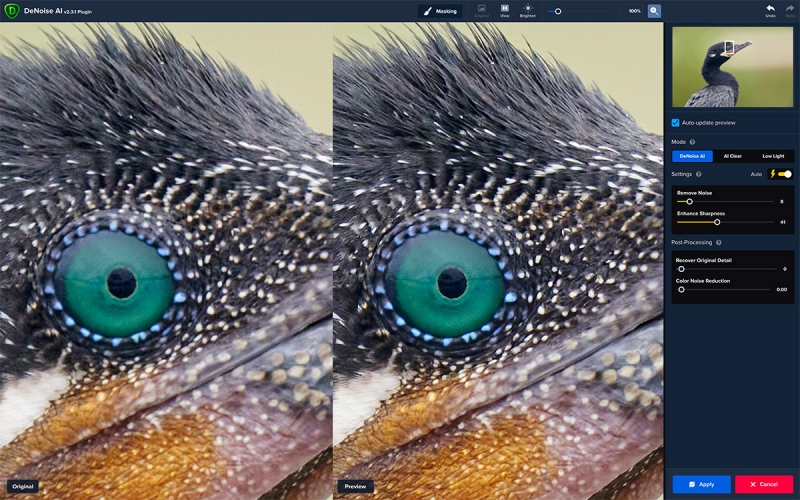
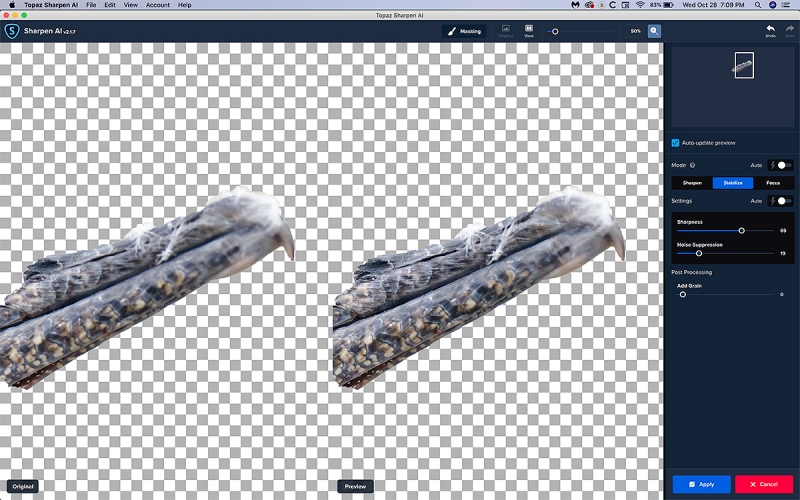
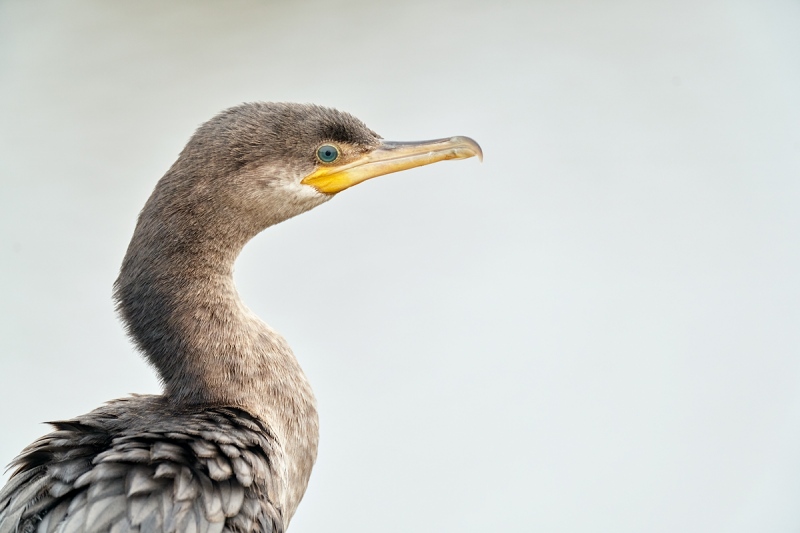
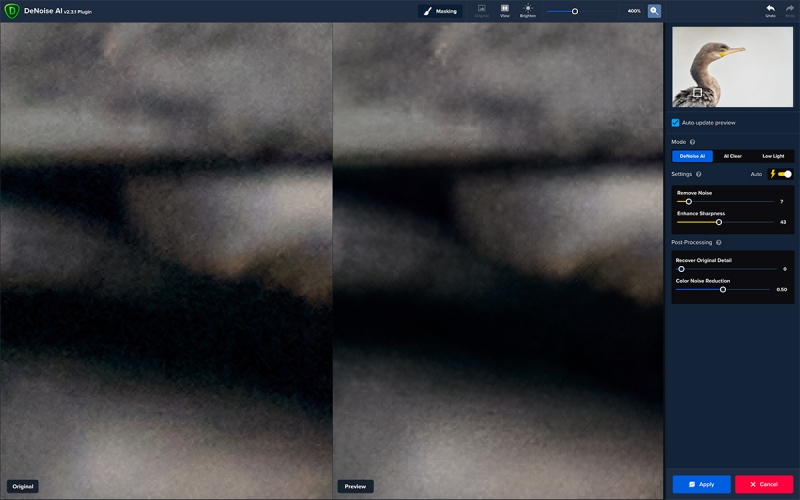













Neotropic is the recognized name, not Neotropical.
Another feature displayed in your photos of the immature bird is the acute gular angle. It’s significantly wider in Double-crested. Tail length relative to body size is longer in Neotropic too. Your comments about size are certainly the best way to pick them out from a flock.
Many thanks. Fixed 14 times 🙂
with love, a
“Here I ran Topaz DeNoise AI at Auto on the whole image to clean up the noise in the BLACKs. For the first time ever, I moved the Color Noise Reduction slider from zero to 50. That really helped to eliminate the green and purple splotches from the darkest tones”
This is an excellent point and one of the better features of Denoise AI. With time, I think you’ll find the masking options helpful as you can run the image through several times targeting different aspects of the image with different settings.
Lovely images, I especially appreciate the head in the lighter area on the first image.
Is that the hook bottom left? I wouldn’t have seen it if you hadn’t mentioned it.
Confused. I did not mention a “hook.”
with love, artie